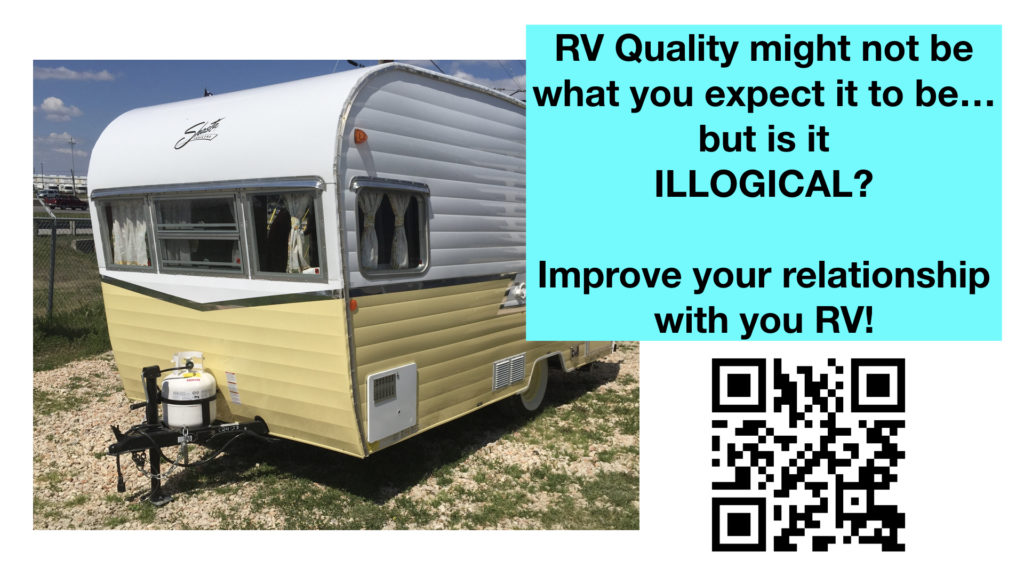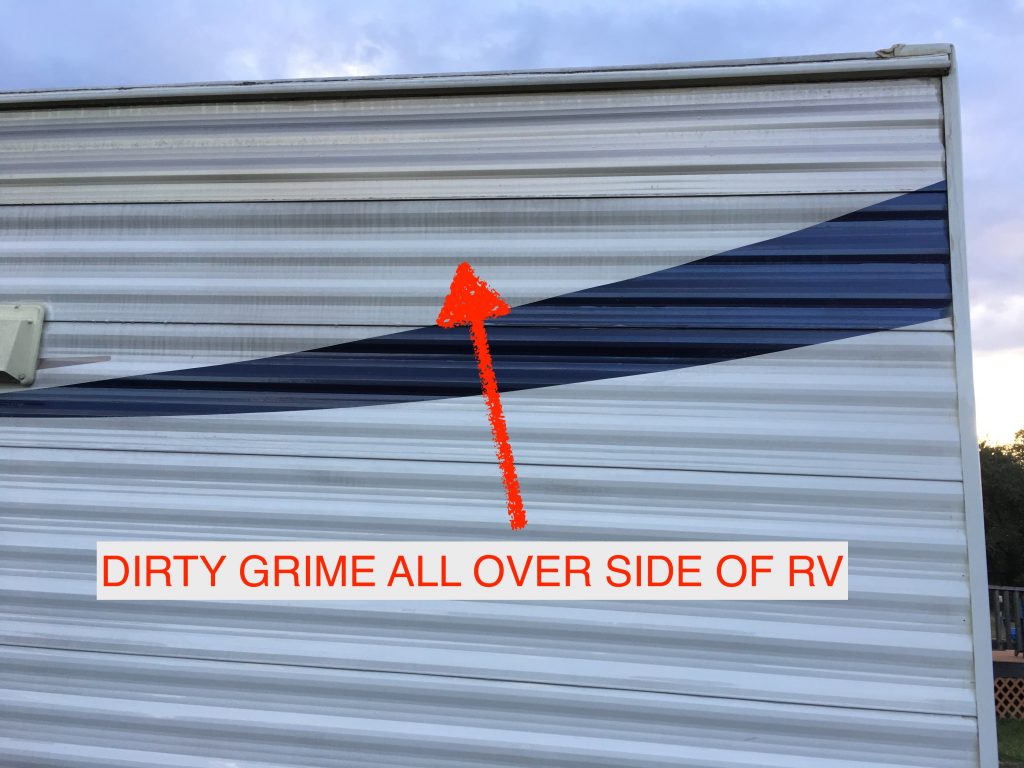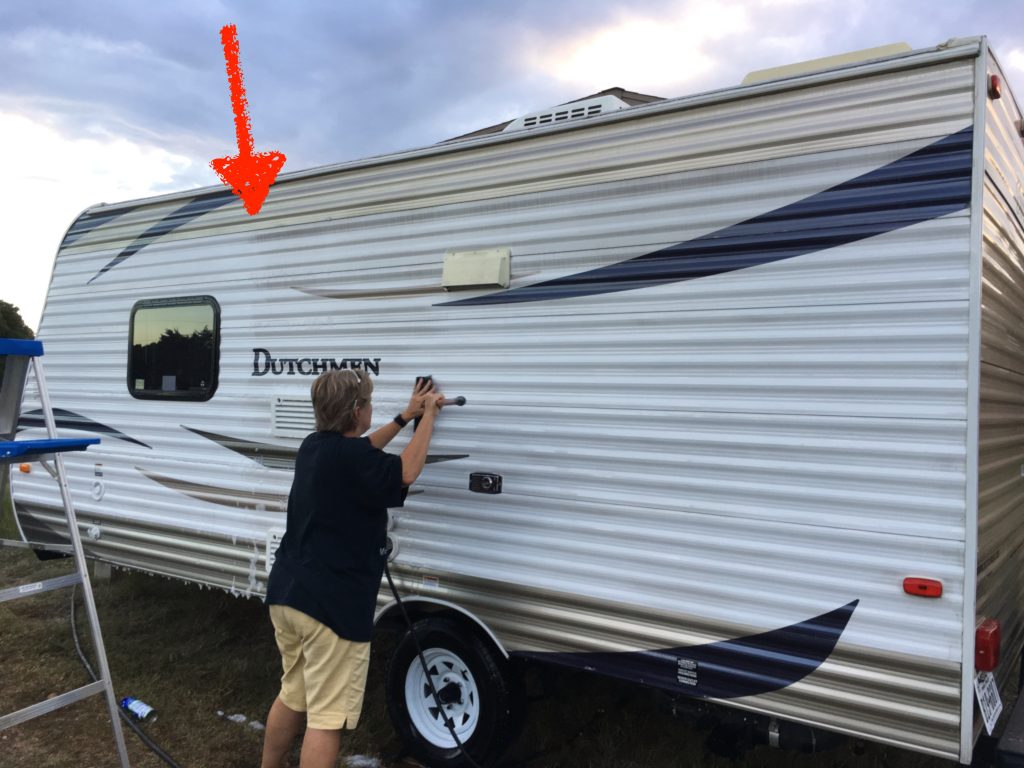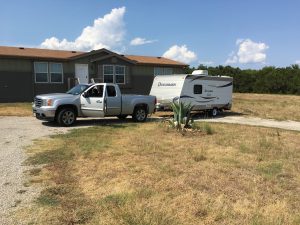
Recently, I was watching a few youtube videos that were ranting about the rv quality of travel trailers.
While their rant was pretty reasonable, I thought that maybe I can help improve their relationship with their RVs.
Granted, most travel trailers are not traveling fortresses. But I think people need to think clearly, incisively, and critically when they go on an RV quality rant.
Editor’s note – the scope of this article is towable trailers, although the principles could be applied to most RVs anyway.
I’m not apologizing for the RV industry. But if you are going to complain, I think you have to ground your complaint in some form of reality.
I’m no quality expert on RVs. Sheri and I have owned three RVs: Puma, Open Range, and the Tiny Texas Tumbleweed. We’ve had problems of all types with these RVs. Puma and Open Range were purchased new. Tiny Texas Tumbleweed we purchased used. I did the most repair articles on the Open Range. The Tiny Texas Tumbleweed (we still own) is probably the least well built of the set of three.
The k-cup mocha vs coffee shop value comparison analogy
Before I go any further, the “RV quality complaint business” reminds me of a thread in the comments section on Amazon for the Keurig Mocha K-cups. (Just below this paragraph I put the k-cup link to Amazon).
For reference, these k-cups cost about $0.50 each. I’m reading the comments one day and one comment and rating in Amazon gives the mocha k-cup a 3-Star rating and says “Not as good as a Starbucks Mocha Latte so I’m giving a 3-star rating.”
I’m thinking “You have got to be flipping kidding me?” The lady pays $0.50 for a little bit of instant coffee and hot cocoa mixed together by a hot water machine and thinks a comparison to foamed milk latte made by a $15/hour barista on a $15,000 espresso machine with Ghirardelli chocolate, gourmet ground coffee beans, fresh milk, and filtered water is a fair comparison. If YOU dear reader do this, please stop it. Stop it now. That doesn’t make any sense.
You have to look at the exchange of value and ask – “Am I getting a fair value exchange – my money for the thing I’m buying?” This has to be objective. If you can’t be objective, then you probably should not own an RV.
Or allow me to rephrase – if you can’t be objective, then you’re probably never going to be happy with an RV.
Is it a car manufacturing process or something else?
The first thing I’ve noticed over the years is that RVs are not built like cars are built. This is a big big big deal and perhaps one of the most very key understandings.
Cars are built on very precise automobile manufacturing line using robots. They are built from mountains of computer generated drawings which feed into computer controlled robots and so much more. Each model is tested extensively with crash tests, environmental tests, and testing you and I cannot possibly imagine. They have teams and teams of people dedicated to creating an incredible owners manual with detailed drawings, photographs, and information on every single aspect of the automobile. A successful model might sell a 500,000 units or more.
A car, by almost any engineering standard, even a Yugo, is an engineering marvel.
RVs are more like a homebuilder process (in my opinion)
RVs are completely different. The scale, magnitude, and participating population isn’t even in the same galaxy as the auto industry. For example, nearly every adult in the US (RV52.com is US/Canada focused) has an automobile (350M) and considering fleet vehicles and more there is likely between 1 to 3 vehicles per person in the US. Contrast that with the idea that a GENEROUS portion of the population for RV camping might be upwards of 20-30M people.
A GREAT year for RVs – a RECORD year – was 2017 – with 500K units built for the ENTIRE industry. Given the variety of floor plans, lengths, sizes, configurations, and more with an RV – it is an engineering and statistical impossibility that you can get the cycles of learning in RVs that you can in a car – ever.
The industry forms itself around the desires of the consumer and the consumer wants choice and shops for RVs much like shopping for a house.
As a consequence, the RV industry operates MUCH MUCH more like the home building industry rather than the car industry.
As a homeowner I can tell you assuredly, there are plenty of things wrong with a stick and frame house.
With a homebuilder mindset I think you are in a much better place to understand the RV industry.
For example, RV manufacturers don’t build their own radio/home entertainment systems NOR do they specify these systems. They simply buy them off of Alibaba (egads) or Best Buy, install them in your RV and throw the manual in the pouch.
Contrast this with an automaker who completely specifies the system and documents it thoroughly – also being mindful of safety as well.
An RV manufacturer probably has the same number of people employed to build the RV as the car company has to DOCUMENT the operation of the car radio.
Same with the heating and air conditioning. AC systems are completely engineered by the car company (whether specified or built by themselves) whereas the RV manufacturer simply installs the units from a catalog.
The range – Buy the range from a catalog. Throw the manual in the pouch.
And the list goes on.
If you call the RV manufacturer and ask them about any one of the 3rd party installed systems (range, air, heat, home theater) they would get a blank look in their eyes and not have any clue. Just like you wouldn’t expect a homebuilder to answer questions on your LG refrigerator, you have to think of the RV manufacturer the same way.
So, this is a BIG idea that affects how people see RV quality: They have car manufacturer expectations when they are dealing with homebuilder.
If you get this expectation fixed, then you’ll be a better match for RV quality.
Is an RV exactly like a home on wheels?
The next thing I run across is expecting the RV to perform at the same quality level as your home.
I’ve already said that RVs are built more like a homebuilding process, but unfortunately for all of us, they aren’t a home.
Probably the biggest difference for an RV versus a home is the idea they are on wheels.
But to get to a good mental place, you really have to let the “on wheels” idea cook in your mind. Being on wheels has consequences.
Major consequences.
Two big consequences are WEIGHT and WIDTH.
These consequences cause RV manufacturers to make the walls VERY thin. This satisfies both weight and width requirements.
Think about it – you can’t very well have 2×6 walls when your RV is only allowed to be 8 feet wide. Those few inches become very precious space. RV manufacturers are judged on spaciousness when customers are reviewing their RVs on the sales lot.
Most RVs have two axles. Each axle can handle anywhere from 3,000 to 7,000 pounds depending upon the class of axle purchased. You simply cannot have 2×6 walls and a tile roof on even the highest rated axle.
So size and weight are a huge problem, which then takes us too the idea of what is it you are buying when you buying this lightweight thing on wheels?
Or is it more like a hard-sided tent?
One way to think about an RV is that is MORE LIKE a hard-sided tent than a site built house. This is because the first idea of the RVs long ago really was to make sleeping in the wild a better experience than just sleeping in a tent.
If you stay true to the camping paradigm, then the obvious things an old fart (like me) would address while staying true to camping, would be:
- Comfortable bed.
- No mosquitoes
- Some temperature control (like AC or heat)
- Decent bathroom
- Protection from rain
- hot shower
So you would make walls that were light-weight, but much better than a canvas or nylon tent.
But it is a hard-sided tent. The idea is still getting out into the wild (kind of) but being comfortable doing it.
I’ve got one more idea to round out the RV quality discussion. So far, I’ve touched on manufacturing paradigm, weight and size paradigm – which leads into the idea of a hard-sided tent.
Next I think it is fair to talk about ourselves as customers.
We are terrible customers
Lets face it. RV customers are not great customers. We want a Taj Mahal on wheels, but we are only willing to pay for a hard-sided tent.
So the RV salesperson sells us hard-sided tent, telling us that we’re receiving the Taj Mahal.
And we let the salesperson do this.
We willingly participated in the lie because we didn’t think through all the problems with an RV that simply cannot be solved unless you spend a tremendous amount of money.
On the money thing – if you want to buy a Tiffin or a Prevost, you CAN get a sturdy beast, albeit with lots to go wrong.
But most of us, we aren’t willing to buy a Prevost. We might have $50K to work with. So going backwards from $50K – assuming 10-15 people worked a week on your RV – there simply isn’t much money left after paying salaries.
And this is a big problem.
As consumers, we think PAYING $50K is lots of money. We’re the same idiots that want to earn the USA median salary ($60K) or better but don’t realize that people who make things for us want to make the median salary too. We simply don’t value their efforts or time.
Since the RV is more akin to a handcrafted item like a home instead of a manufactured item, it takes human hands to build it, which means human pay, which means human salaries, which means something that cannot be ignored as a factor.
So after everyone is paid to work on our RV, there isn’t much money left over for the materials to build the RV.
And that causes the RV manufacturer to cut corners every way possible.
Cheap stoves that don’t have igniters. Water connections that are hard to keep from leaking. Wood quality that isn’t near the quality of wood used in a home. Under RV seals that are nothing more than plastic wrap. Our Open Range used coroplast which is a step-up, but still a long ways from awesome. Plastic faucets that are, well, plastic. Off brand TVs.
More insidious than the VISIBLE things might be shortcuts on the metal frame, the axles, the wheel bearings, even the CLASS and type of metal used in creating the frame.
So you see, we consumers have PUSHED the RV manufacturers into doing naughty quality things.
You might say “Oh RV52, those are rich capitalists who are sapping wealth off of us poor unsuspecting po folk.” I say baloney. The RV industry doesn’t even look CLOSE to the health and vigor of the insurance industry or big pharma, or laughably even the car industry. It is littered with bankruptcies. I’m sure there were some folks who made out, but I think that list is pretty short.
So you can’t use the self righteous indignation against profits as the excuse for low RV quality. There just aren’t enough RV industrialists making out like bandits to constitute a trend.
The industry bad behavior really lives with us… the consumer.
Where does this leave us on getting decent quality or how can you know where you stand?
I don’t think it leaves us consumers in a good spot. We’re terrible customers and we’re not about to change. Our behavior is what RV manufacturers have to consider when selling RVs, so they simply do EXACTLY what we train them to do.
So how do we stay safe? How do we protect ourselves?
I have some ideas which might be odd, in no particular order, but here goes:
- Pay attention to the weight on your axles and hitch. I believe that MOST RV manufacturers stay within regulatory law on axles and loading so if you abide by the ratings then at least you can stay safe.
- Make sure the bottom of the RV is sealed with coroplast at a minimum. If plastic wrap – I would stay away. Maybe if they sprayed the whole bottom with sealant – maybe. I’d have to think about that.
- Look for EXCESS weight carrying capacity between the unloaded weight and the loaded weight. If the RV has lots of carrying capacity – say 2000 pounds plus, then the axle is overdesigned (in a way of thinking). This at least gives you insight into the manufacturer’s mindset.
- Look for the total weight of the unit. More weight is at least a PROXY for more materials which could indicate better quality.
- I have a HUNCH that the corrugated metal siding is correlated to a lower quality RV. I can’t prove it. It is just a hunch.
- Some people like JR Consumer have collected long term user feedback and also looked at manufacturing processes. They can give you some insight.
- Spend more money. Not perfect, but an Airstream travel trailer will score high on all the bullets I’ve listed here. I have a hunch they put more into their trailer.
- You can buy books on how to find a quality RV – or at least how to avoid some of the biggest pitfalls – like buying a used RV with a ton of rot. Do it. Why wouldn’t you spend $19 on a book that could save you $1000s? Don’t be a dolt.
- You can probably lean on the warranty a little – which does mean I’m thinking buying new gives you a little protection. If you can get a warranty that lasts more than a year that is probably a reasonable sign. Like Hyundai’s 10 year warranty. It MADE Hyundai improve and now their quality is pretty good.
- Get yourself a good toolbox and be prepared to use it.
- Relative to the toolbox, pay very special attention to water leaks. Pay attention to water coming in from the road if you travel in wet weather (I would say avoid if possible for a number of reasons). Tighten your water connections, or at least check them after you put a little water pressure on the system. Water seems to be the worst culprit.
- Expect the vibration of travel to be a problem.
- Inspect the roof as much as you can. This is a pain and I probably don’t do it as often as I should, but taking a gander up on top regularly might keep you from having a leak problem that gets out of hand.
- Slow down when you’re driving. If the frame is lower quality – a real possibility – there is nothing like wind, misalignment, vibration due to lower quality metal, and other imperfections to cause an accident. Treat it like a hardsided tent.
I’m sure there are other pointers, but my main idea is to help all of us, myself included, have a more realistic expectation of RVs.
Summary of the things that might help us relate better to RVs
If you want to have a better relationship with your RV – knowing its shortcoming and acknowledging yours here are the main ideas I’ve presented:
- RVs are more like a homebuilder process than a carmaker process for manufacturing.
- RVs are more like a hardsided tent than a mobile house.
- Be a better consumer – what are you getting for your money? Are you recognizing that RVs require lots of manual labor to build? Are you willing to pay the RV company so that they can pay their employees?
- Knowing the first three bullets… are you taking steps that are realistic steps to be prepared for and avoid problems caused by those bullets?
Anyway, I hope this helps.
And by NO MEANS should you take it easy on the RV salesperson or RV industry. Just be realistic!


